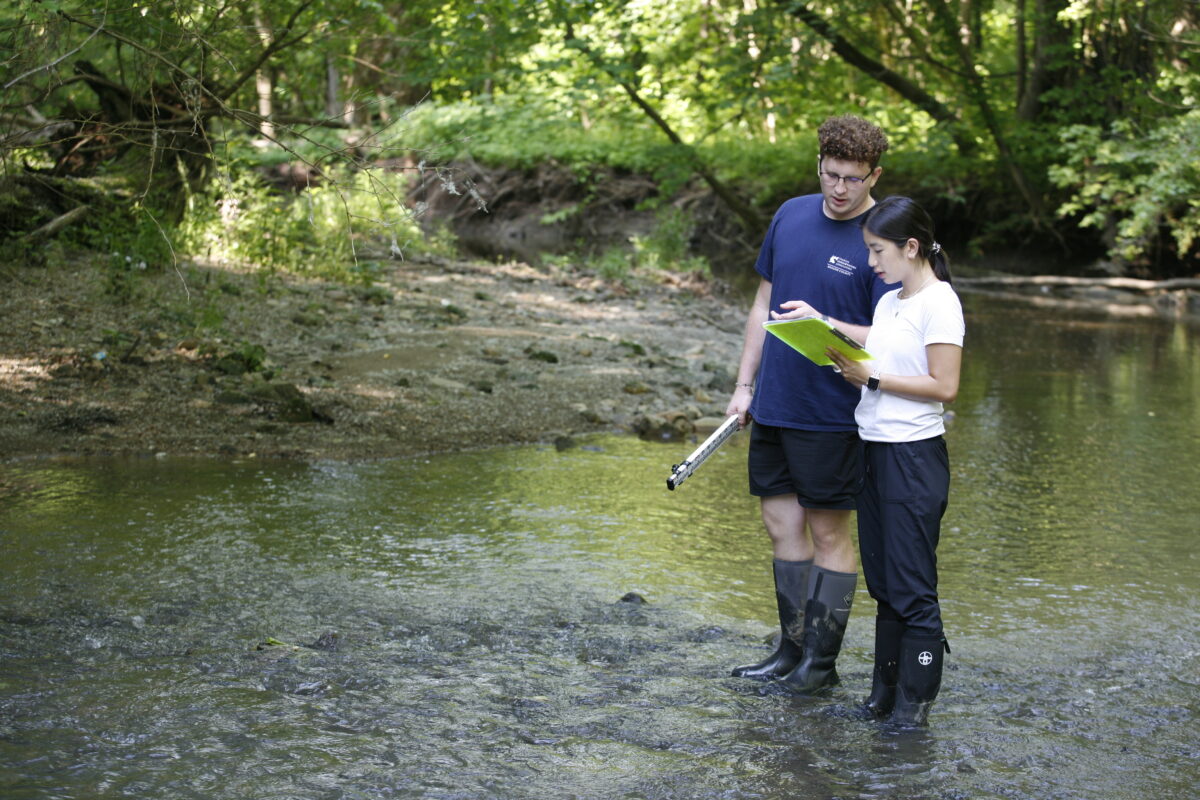Dr. Doug Spieles laid out a map of Licking County in front of him and marked tiny spots along blue lines. An environmental studies professor at Denison University, he’s working alongside a pair of research assistants to track the ecological features and invertebrates of streams in Central Ohio before and during Intel’s move into central Ohio.
The places the team visits often are the overlooked creeks and streams that carve out winding paths along farmland, through neighborhoods, and across towns in the area.
The ongoing study has a special significance with the arrival of Intel, the $20 billion deal Ohio struck with the computer chip manufacturing company that will begin its operations on land annexed into New Albany from Jersey Township in Licking County.
Dr. Spieles’ research assistants earlier this year, Alex Sket and Sarah Lim, are Denison students, and on a Tuesday morning in the summer, the team went out to survey a stream in Reynoldsburg.
“The perfect marriage between environment and business doesn’t exist yet,” said Lim, her boots in the stream, explaining her interest in this research. Lim and Sket are both environmental science majors, and Lim also studies global commerce, while Sket also majors in journalism.
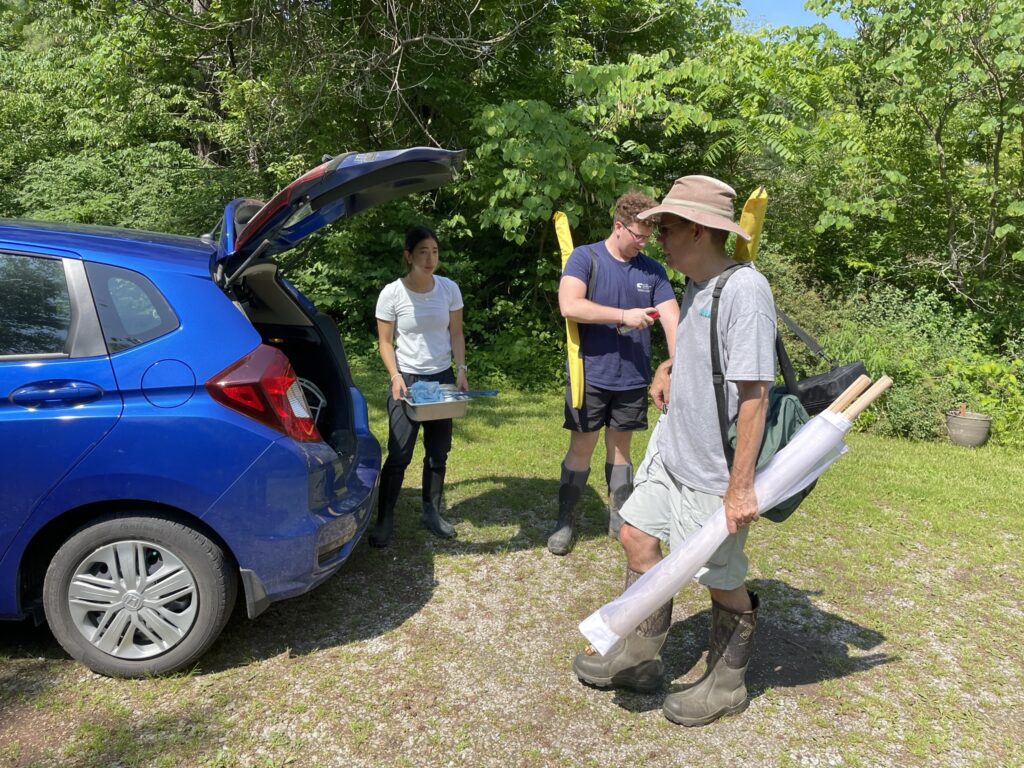
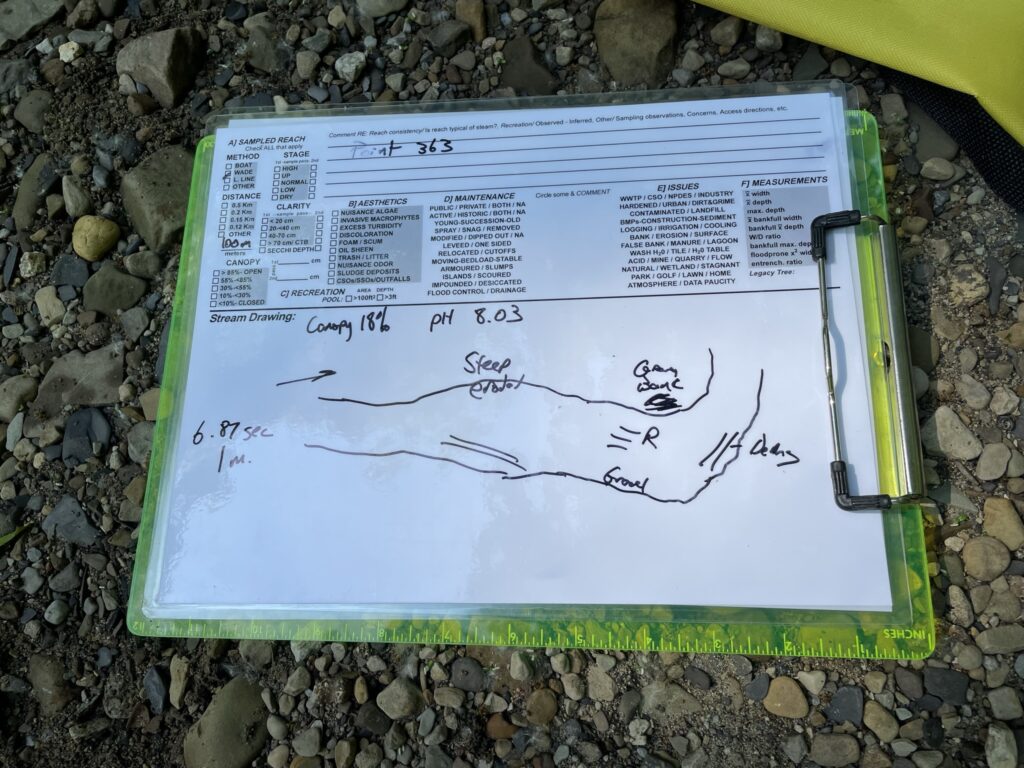
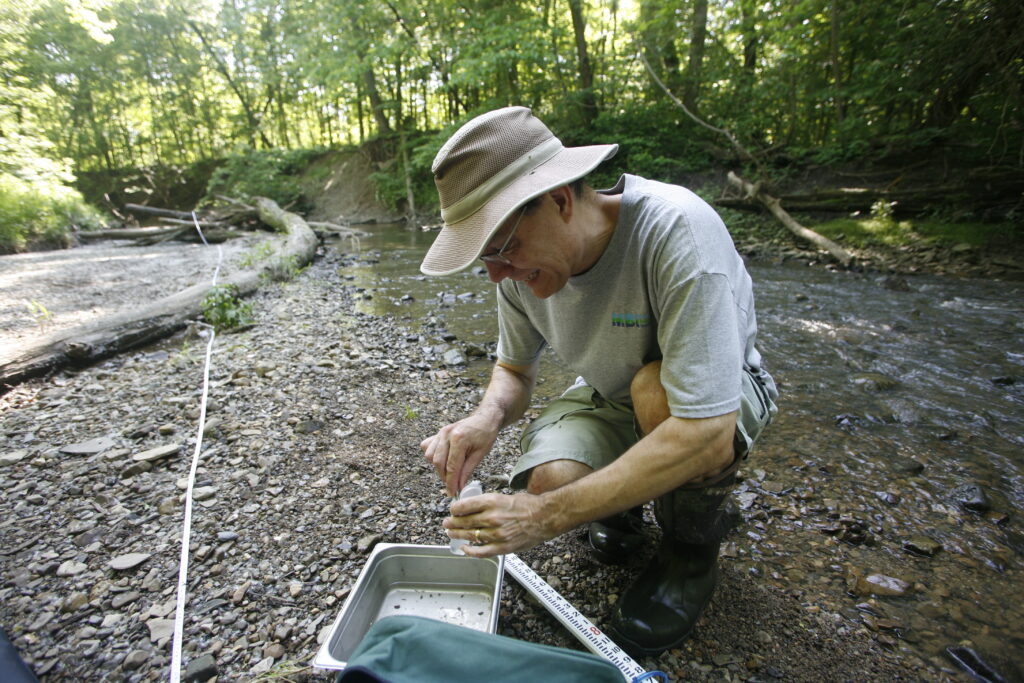
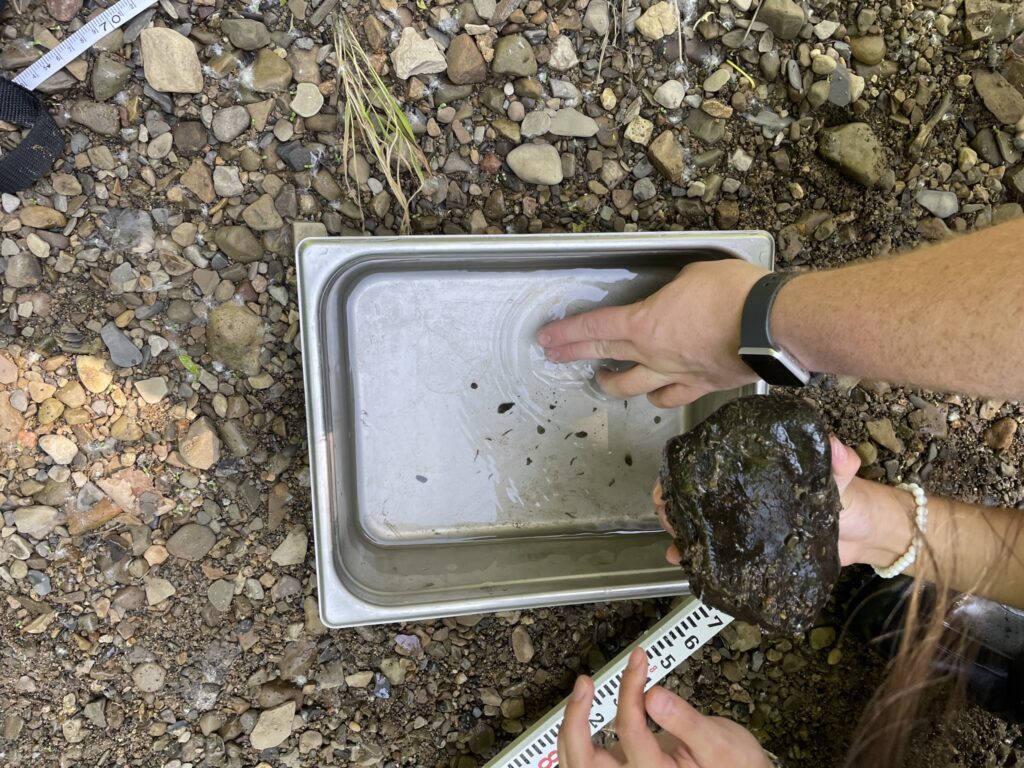
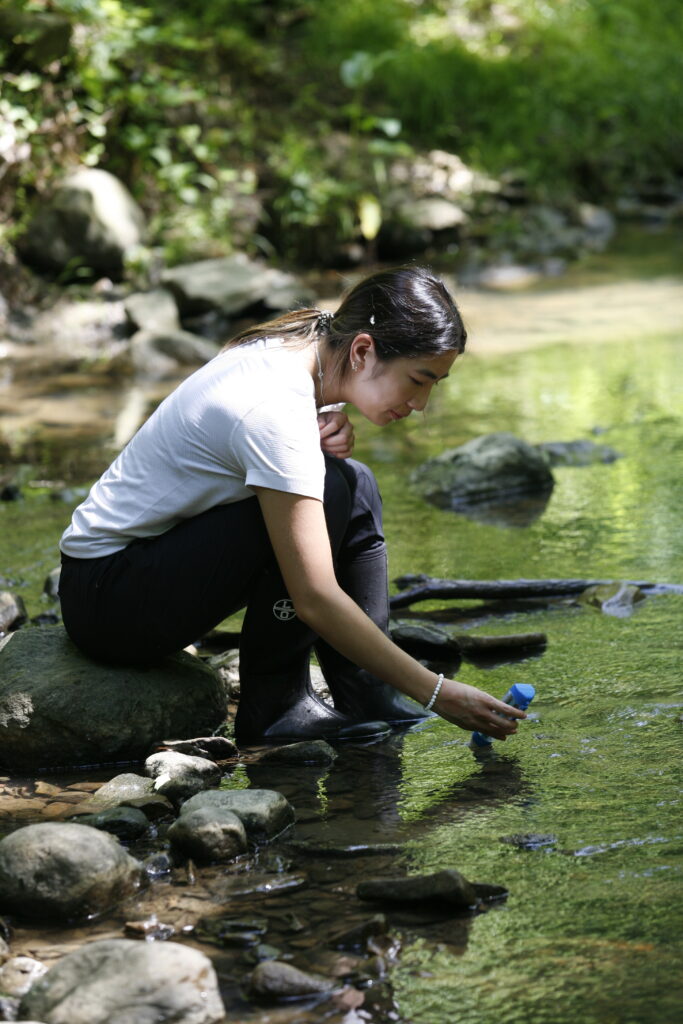
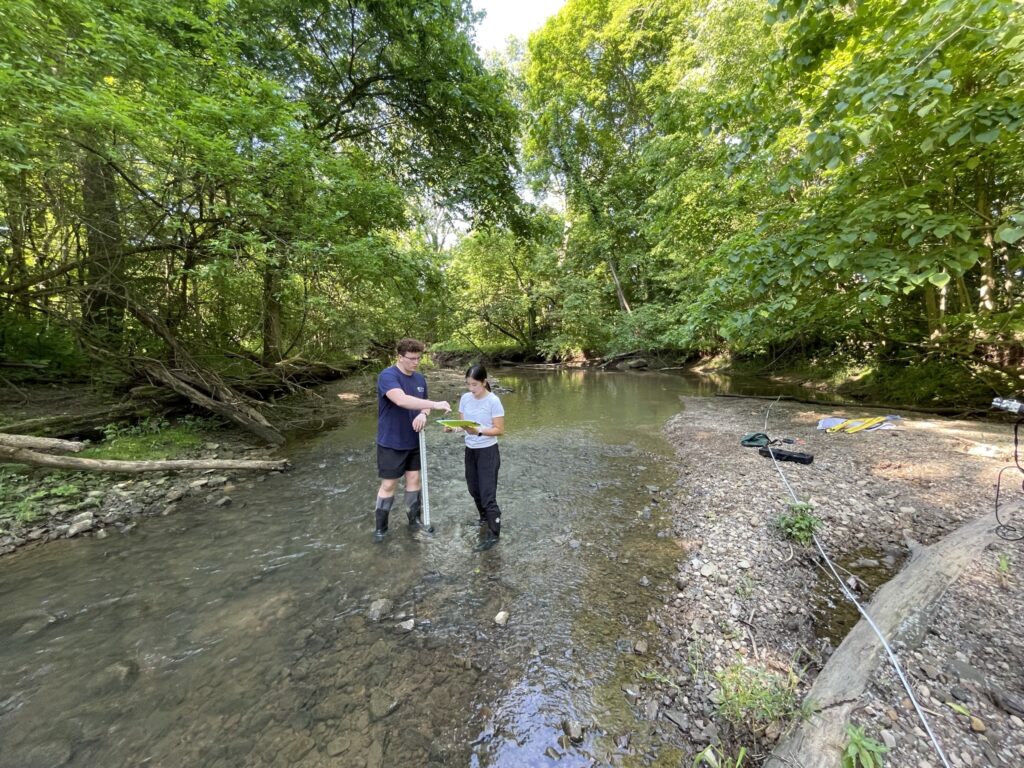
All photos by Alan Miller. Credit: Alan Miller
As soon as they arrive, they lay out their supplies for collecting invertebrates. Dr. Spieles walks with a measuring tape 50 feet up the stream. Then they grade the environment on its sediment, erosion, water flow features and path off the stream.
The ideal stream? One that has bends that allow for pools where wildlife can thrive, a lack of erosion, and the presence of diverse wildlife, are key parts of a healthy stream. Dr. Spieles prefers a 500 foot distance between a stream and agriculture to prevent pollution and erosion. But many farmers provide only 50 feet between their property and the stream, and some farm right up to the stream’s edge.
Karl Sandin has been fishing in Licking County streams for years. He’s found favorite spots off the beaten path where he wades in, catches fish and then releases them. Sandin tracked stream quality through observations, writings, and pictures over the course of the summer.
Sandin is an art history professor at Denison University who has an interest in visual culture. “I got very interested in these issues of urban development, poverty, homelessness and the unintended negative effects of urban growth as it unfolds,” Sandin said.
Sandin has gone on a couple trips himself with Dr. Spieles to visit streams and track wildlife there. For now, what Dr. Spieles and Dr. Sandin have collected will serve as a reference point for what is to come in following years.
Kristy Hawthorne from Licking Soil and Water Conservation District also has been in contact with Dr. Spieles about the project. At the entrance to her office there are rows of pamphlets about knowing what to fish in Ohio and protecting pollinators.
Hawthorne is the District Program Administrator and is working with construction companies to meet environmental standards for development. With a background in business management and prior work with the oil and gas industry, she is able to approach the change balancing development and involving community voices. “I’ve talked to a lot of landowners myself and went to landowner meetings and listened to what was being said,” Hawthorne said.
One of the gaps in information is understanding the process of reviewing and planning for a construction project of this scale from contractors to subcontractors, Environmental Protection Agency permits, and inspectors. “But all of this takes time,” Hawthorne said, noting the uniqueness of the land that was annexed.
“We would like to hear from the landowners about their concerns so they can be addressed,” Hawthorne said. The Intel site will first impact the South Licking Conservancy District’s watershed. A concern is meeting the storm-water drainage system needs in lesser developed areas as Intel begins to build.
She said that she’s been in contact with Intel and has been invited as a community voice to construction planning meetings.
In an email statement, Intel explained that it would follow environmental guidelines for runoff water. “Intel and our contractors are managing stormwater in accordance with the site Storm Water Pollution Prevention Plan, and as part of the site master plan, there will be retention ponds on the property to prevent stormwater runoff from the site.”
For those who have concerns about wetlands, Intel described their impact as a “net-positive.”
“That is, more wetlands will be in place than previously existed,” Intel said of their plan to restore wetlands in the local area.
“We have a goal to achieve net positive water use by 2030,” Intel continued, “and in 2020, we returned and restored approximately 90% of our freshwater use to our community and local watersheds, through our water management practices and project investments.”
Spieles and Sandin hope to, in their own ways, paint a picture of Licking County streams before the inevitable changes in the landscape. Hawthorne, working as a bridge between development and Licking County landowners, is making sure that change isn’t drastic and that community voices are heard throughout the process.

